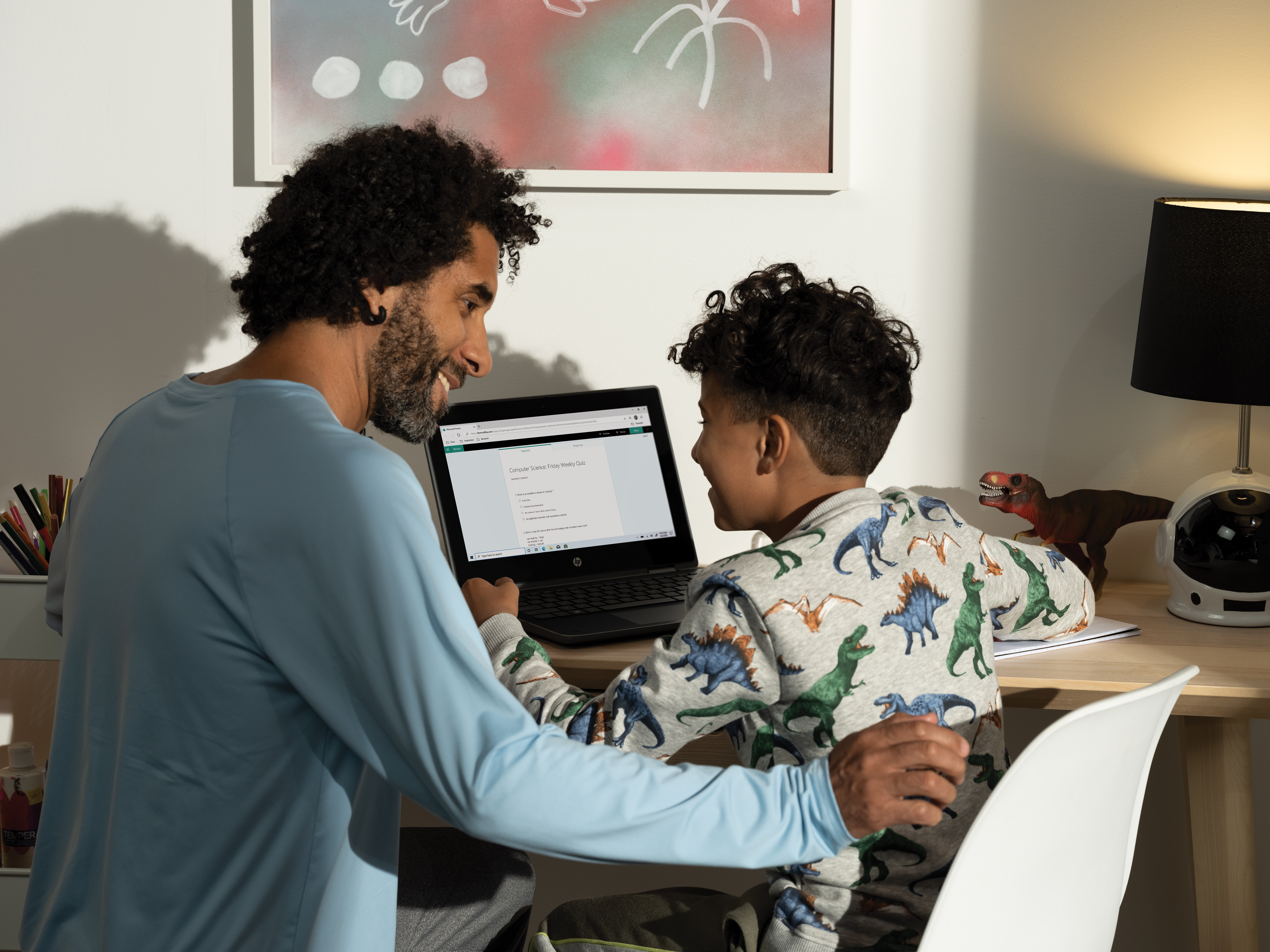In this time of disruption, educators, administrators, and staff have shown extraordinary resilience. They have navigated an unprecedented pivot to remote or hybrid learning while keeping students at the center. To do so, they rapidly adopted cloud solutions and modern devices.
As they move forward to implement recovery plans, they want to build on these investments while filling recession-driven budget gaps. To support these goals, new government stimulus funds may be available to purchase technology that can better engage students from wherever school happens. Visit the U.S. Department of Education website to learn more.
Hybrid learning—here to stay?
Many institutions imagine a future where hybrid learning is here to stay. According to a RAND Corporation survey, 10 percent of district leaders have adopted or are considering a long-term hybrid instructional model, and another 19 percent said they were considering ongoing remote instruction.
Many find that technology adopted for remote learning has long-term value to spark new experiences and levels of engagement. At the same time, schools must ensure high levels of security and privacy. Institutions are meeting these needs with Microsoft Surface devices, giving faculty, staff, and students the freedom to teach and learn from anywhere while staying highly secure and productive.
For example, Morehouse College improved collaboration, productivity, and equity by offering Surface Go 2 devices to all students. Shelby County Public Schools took the same approach to overcome multifaceted educational challenges. Microsoft brings a strong focus on technology accessibility and inclusion to help meet diverse student needs.
Better learning for every student
In today’s digital, physical, remote, and hybrid classrooms, teachers need new ways to help every student achieve more. Providing them with natural ways to work can help. Touchscreens support intuitive interactions for every student, whether they’re Pre-K or postgrad. Digital inking offers the versatility to sketch ideas, take notes, or do math equations. The Surface family of devices offer rich, responsive interactions like these to help drive student success.
With 2-in-1 devices like Surface Go 2, students can quickly move from writing essays using the keyboard to navigating the web with touch and inking on the screen. These devices are also lightweight and portable for even the youngest students, and they feature a sleek design everyone can appreciate. With all-day battery life and optional LTE, students have the flexibility to keep learning from anywhere.
Microsoft Surface devices also empower school districts to choose solutions that meet their unique needs. With the Surface Laptop Go, the features most loved by Surface Laptop customers have arrived in a smaller, more affordable design built to fit school budgets. It’s lighter than most textbooks, yet powerful enough to run essential education apps.
Creating the classroom of the future, today
Many classrooms of the future will follow a hybrid model, mixing remote and in-person learning—a perfect scenario for the Surface Hub 2S large-format digital whiteboard and the Microsoft Teams collaboration environment. Together Mode in Teams puts remote participants in a shared digital space, reducing distraction and creating a connected class experience.
By unifying in-person and remote participants, hybrid learning becomes more seamless and engaging. This is just one example of the many Teams features that can bring hybrid learning to life.
Secure and manageable for the long term
Of course, for schools to use any technology, it must meet strict security and privacy requirements. Surface devices feature modern, chip-to-cloud security. Updates are pushed out automatically, helping to ensure that every user has the latest protections. By adding Windows Defender Advanced Threat Protection and Microsoft Endpoint Manager (sold separately), schools can identify and mitigate attacks to prevent data loss and unify device management.
The busy IT departments responsible for managing the transition to remote and hybrid learning can breathe a sigh of relief. Surface devices are easy to deploy and manage. Windows Autopilot provides zero-touch deployment so students, faculty, and staff can set up their devices without help from IT and start using them from day one. Using Microsoft Endpoint Manager, IT administrators can manage all of their district’s devices from one place so they can focus on supporting new forms of learning.
Microsoft is committed to supporting educational institutions as they move from recovery to reimagining. To learn more, watch the webinars about building transformative device strategies for hybrid learning in K-12 and higher education. To find out more about purchasing Surface devices, connect with a Microsoft partner today.




